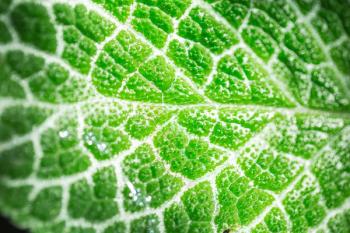Key Points
- Researchers from Université de Sherbrooke studied seven Arctic gossans in Nunavut using rover-compatible spectroscopic tools, showing these formations serve as promising analogs for ancient Martian hydrothermal systems and potential microbial habitats.
- The team found gypsum, quartz, iron sulfides, and organic carbons, highlighting the potential for organo-mineral complexes to preserve biosignatures in environments similar to Mars.
- The study confirmed the effectiveness of multiple in-situ techniques (e.g., Raman, XRD, VNIR, MIR-TIR), emphasizing the value of analytical redundancy in planetary exploration and guiding future astrobiological targets on Mars.
A recent study explored how Arctic gossans could teach scientists more about potential past life on Mars. Using an assortment of spectroscopic techniques, the research team, comprised of researchers from the Université de Sherbrooke, investigated seven gossans at Expedition Fiord on Axel Heiberg Island in Nunavut, using a suite of rover-compatible remote sensing techniques (1). The results offer a tantalizing glimpse into how these terrestrial formations may serve as valuable analogs for Martian environments and guide future astrobiological exploration (1).
What are gossans?
Gossans are deposits that are formed through the weathering of sulfide-rich mineral deposits, typically under acidic conditions induced by fluids such as meteoric water or hydrothermal solutions (2). In the Arctic, these formations are subjected to seasonal chemical weathering due to freeze-thaw cycles of permafrost, creating what scientists call “reactive gossans” (1,2). The reactive nature of these deposits makes them potential hotspots for microbial life, making them especially interesting for researchers in the field of astrobiology.
What did the researchers do in their study?
As part of the experimental procedure, the researchers created comprehensive profiles of each gossan. The spectroscopic techniques used were X-ray fluorescence (XRF), X-ray diffraction (XRD), visible to near infrared (VNIR), mid to thermal infrared (MIR-TIR) spectroscopy, and Raman spectroscopy. These techniques were selected specifically for their applicability to future Mars missions, where compact, non-destructive tools must be mounted on robotic platforms (1).
What were the findings of the study?
When they analyzed the gossan samples, the researchers discovered the presence of silicon, calcium, and iron. When further mineralogical analyses were conducted, the researchers discovered the presence of gypsum and quartz, which were the primary constituents (1). These minerals were also accompanied by variable amounts of silicates, sulfates, iron sulfides, and iron oxyhydroxides (1). Of particular interest was the detection of organic carbon, which is sometimes as deep as 50 centimeters below the surface, found in organo-mineral complexes identified using Raman spectroscopy (1).
The researchers also documented the physical and chemical stratification of the gossans. All formations exhibited classical profiles, with oxidized upper zones transitioning into deeper layers containing unweathered sulfides. Some gossans displayed vivid color changes, which alternated between bands of orange and grey, linked to compositional variations and likely driven by repeated freeze-thaw cycles within the active layer of permafrost (1). One trench, dubbed WG-G2, stood out for its finely layered, multi-colored profile that may mirror subsurface conditions in ancient Martian hydrothermal systems (1).
With all the methods used in the study, XRD analysis was the best at detecting iron sulfides. Meanwhile, the consistency among Raman, VNIR, and MIR-TIR data validated the utility of these techniques for in-situ mineralogical assessments (1). This redundancy is crucial for space exploration missions, where relying on multiple tools ensures more reliable identification of potential biosignatures (1).
What are the next steps in this work?
The research team emphasizes that future investigations should aim to decipher the localized mechanisms influencing mineral and organic carbon distribution within gossans. Such efforts could significantly enhance our ability to target regions on Mars where signs of past life are most likely to be preserved (1).
As space agencies gear up for upcoming missions to the Red Planet, including sample-return initiatives and the European Space Agency’s delayed ExoMars rover, the findings from this remote Arctic outpost could play a pivotal role in shaping scientific priorities. With every new gossan analyzed on Earth, the roadmap to discovering life on Mars becomes a little clearer (1).
References
- Belleau-Magnat, G.; Lemelin, M.; Cloutis, E.; et al. Mineralogy, geochemistry and morphology of Arctic gossans on Axel Heiberg Island, NU, Canada: Spectroscopic investigation and implications for Mars. Plan. Space Sci. 2025, 256, 106036. DOI: 10.1016/j.pss.2025.106036
- Clabaut, E.; Lemelin, M.; Germain, M. A Deep Learning Approach to the Detection of Gossans in the Canadian Arctic. Remote Sens. 2020, 12 (19), 3123. DOI: 10.3390/rs12193123.






